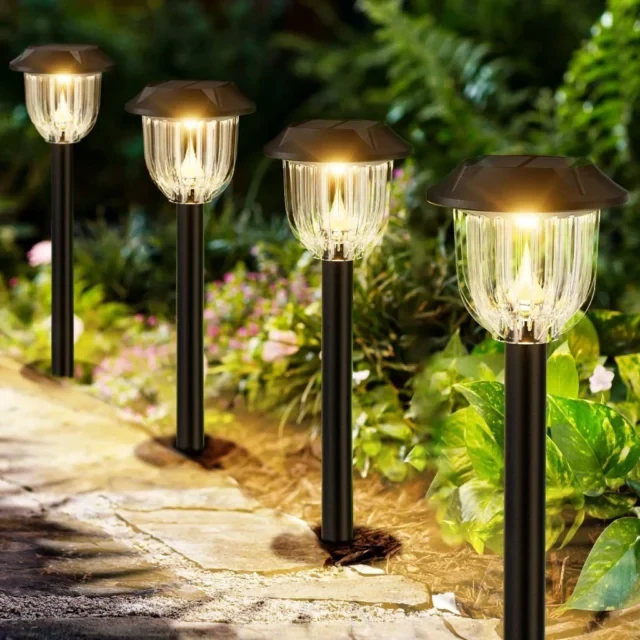Illuminating Sustainable Futures
The garden solar lights market has emerged as a vital segment of the renewable energy sector, driven by growing environmental consciousness and the demand for sustainable, cost-effective lighting solutions. As urbanization accelerates and homeowners seek to enhance outdoor spaces, garden solar lights offer an eco-friendly alternative to traditional lighting, harnessing solar energy to illuminate gardens, pathways, and landscapes. These lights reduce reliance on fossil fuels, lower electricity costs, and align with global sustainability goals. With rising energy prices and increasing awareness of climate change, the market is poised for significant growth, supported by technological advancements and government initiatives promoting renewable energy. This report explores the market’s current landscape, technological innovations, commercial opportunities, and future prospects, highlighting its role in shaping a greener future.

Market Snapshot
The garden solar lights market has witnessed robust growth, with a global valuation of approximately USD 8.1 billion in 2022, projected to reach USD 13.92 billion by 2030, growing at a compound annual growth rate (CAGR) of 7%. Key players such as Philips, OSRAM, Panasonic, and Shenzhen Sunnysam Technology Co. Ltd. dominate the competitive landscape, focusing on product innovation and expanding their portfolios to capture market share. The Asia-Pacific region holds the largest market share, driven by government support in countries like China and India, where initiatives like India’s Solar Energy Plan for Low-Power Loom Units promote solar adoption. North America and Europe follow, with strong demand in the U.S., Germany, and the U.K., fueled by consumer interest in sustainable living and stringent energy regulations. The Middle East and Africa present untapped potential, supported by organizations like the World Bank, which encourages off-grid solar solutions in developing regions.
The market is segmented by product type (e.g., LED, low-voltage lights), application (residential, commercial, industrial), and distribution channels (online stores, specialty stores). The residential segment leads due to rising demand for smart, sustainable home systems, while commercial applications, such as public parks and streets, are growing due to government-backed projects. Despite challenges like weather dependence and high initial costs, the market’s trajectory remains upward, driven by declining solar technology costs and increasing consumer awareness.
Technological Breakthroughs
Advancements in solar technology have revolutionized garden solar lights, making them more efficient, versatile, and user-friendly. Modern solar lights leverage high-efficiency photovoltaic (PV) cells, such as monocrystalline and polycrystalline silicon, which convert sunlight into electricity with greater effectiveness. Improvements in battery storage, particularly lithium-ion batteries, have extended operational lifespans and enhanced reliability, enabling lights to function even in low-sunlight conditions. LED technology, known for its superior lumen-to-wattage ratio, dominates the market, offering brighter illumination with lower energy consumption compared to traditional bulbs.
Smart features are transforming garden solar lights into intelligent systems. Integration with Internet of Things (IoT) technologies allows for remote control, motion sensors, and automated lighting schedules, enhancing user convenience and energy efficiency. For instance, lights equipped with smart sensors can adjust brightness based on ambient conditions or activate only when motion is detected, reducing energy waste. Additionally, innovations like solar tracking mounts and thin-film technology improve energy capture, making solar lights viable in diverse climates. These advancements not only boost performance but also align with the growing trend of smart home ecosystems, where solar lights integrate with voice-activated assistants and home automation systems.

Investment and Growth Potential
The garden solar lights market offers substantial commercial opportunities, driven by global trends in sustainability and urbanization. Investors can capitalize on the increasing demand for eco-friendly lighting in residential and commercial sectors. The residential market, in particular, is expanding as homeowners adopt solar lights for aesthetic and functional purposes, such as enhancing garden ambiance and improving security. Commercial applications, including municipal projects for parks and pathways, present lucrative prospects, especially in regions with supportive policies. For example, government incentives in Europe and Asia-Pacific, such as subsidies and rebates, encourage solar adoption, creating a favorable environment for market expansion.
Emerging markets in Asia-Pacific, Latin America, and Africa offer significant growth potential due to rapid urbanization and limited grid infrastructure. In India and China, government programs promote solar lighting in rural and urban areas, addressing energy access challenges. The Middle East and Africa, with abundant sunlight and increasing investments in renewable energy, are poised for growth, supported by international organizations like the International Finance Corporation. Strategic partnerships, mergers, and acquisitions are common strategies among key players to expand their footprint and innovate product offerings. For instance, companies like Solarcentury are investing in R&D to develop multifunctional solar lights, enhancing market competitiveness.
However, challenges such as high initial installation costs and weather dependence must be addressed to unlock full market potential. Innovations in cost-effective solar panels and batteries are reducing barriers, while educational campaigns on installation and maintenance can boost consumer adoption. Investors should focus on regions with strong regulatory support and high solar potential, such as the U.S., Germany, and India, to maximize returns.
Future Outlook
The garden solar lights market is on a promising trajectory, driven by technological advancements, environmental awareness, and supportive policies. As solar technology becomes more affordable and efficient, adoption is expected to surge across residential, commercial, and industrial applications. The integration of smart features and IoT capabilities will further enhance market appeal, aligning with the global shift toward smart cities and sustainable infrastructure. Regions like Asia-Pacific and the Middle East are set to lead growth, supported by government initiatives and increasing urbanization.
To sustain growth, industry players must prioritize innovation, focusing on energy-efficient designs and smart functionalities that cater to evolving consumer preferences. Collaboration with landscape designers and home automation companies can drive product differentiation, while educational efforts can address consumer concerns about installation and performance. Despite challenges like weather dependence and initial costs, the market’s long-term outlook remains strong, with a projected CAGR of 7% through 2030. As the world transitions to a clean energy economy, garden solar lights will play a pivotal role in illuminating sustainable, aesthetically pleasing outdoor spaces.

Comments